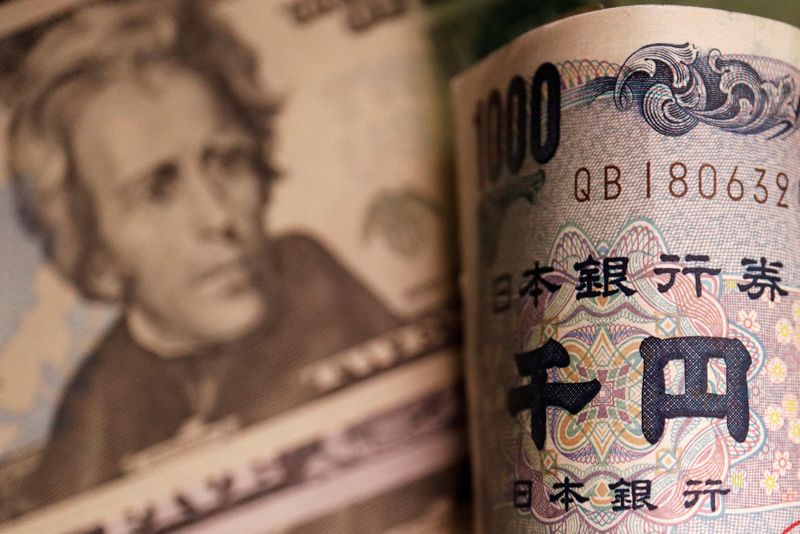
Samuel Indyk and Kevin Buckland
LONDON (Reuters) – The yen fell against the dollar on Thursday, reversing direction after a sudden surge late on Wednesday that traders and analysts rushed to blame on intervention by Japanese authorities.
The yen fell 0.5% to 155.30 per dollar as of 0746 GMT, reversing about half of its gains on Wednesday from about 157.55 to exactly 153 in a period of about 30 minutes.
Wednesday’s sharp move came during a quiet period in markets after Wall Street closed and hours after the US Federal Reserve concluded its policy meeting.
The dollar had already fallen as Fed Chairman Jerome Powell reiterated the central bank’s propensity to ease policy, although he reiterated that persistent inflation meant it could take some time for interest rates to be cut.
“It took markets by surprise because it obviously happened during the U.S. session and appeared to be timed for the FOMC to take advantage of a weaker dollar,” said Kyle Rodda, senior financial markets analyst at Capital.com in Melbourne. .
“The ‘stealth attack’ element is actually that the Treasury is trying to punish speculators and send out a warning to sell the yen,” he said, referring to Japan’s Ministry of Finance (MOF).
Japanese Deputy Finance Minister for International Affairs Masato Kanda, who oversees foreign exchange policy at the Finance Ministry, told Reuters he had no comment on Japan’s intervention in the market.
The dollar is still up more than 10% against the yen this year as traders delay expectations for the timing of the Fed’s first rate cut, while the Bank of Japan has signaled it will slow down further policy tightening after raising rates in March . for the first time since 2007.
remove advertising
.
INTERVENTION?
The gap between the two countries’ long-term government bond yields is 371 basis points. That helped lift the dollar to a 34-year peak of 160.245 yen on Monday and also triggered a sharp reversal that official data said was due to Japanese intervention totaling about $35 billion.
“I don’t think intervention alone can limit the dollar-yen exchange rate,” said Nils Christensen, chief analyst at Nordea.
“The Bank of Japan remains reluctant to raise its key rate, which is one of the reasons why I expect the market to test the dollar’s upside against the yen.”
The Treasury likely intervened in the foreign exchange market to signal that it considers 160 yen per dollar to be its line in the sand, Takatoshi Ito, a Columbia University academic and former Treasury chief, told Reuters on Thursday.
The index, which measures the currency against the yen, euro, pound sterling and three other major currencies, fell 0.1% to 105.58 on Thursday, after falling 0.6% on Wednesday from a nearly six-month high.
The euro rose 0.1% to $1.0727 after rising 0.5% in the previous session.
Sterling added 0.1% to $1.2544, adding to Wednesday’s 0.3% gain.
As widely expected, the Fed kept rates steady on Wednesday, and Powell stressed that it will “take longer than previously expected” for policymakers to feel confident that inflation will resume falling toward its 2% target. At the same time, he described the risk of further rate hikes as “unlikely.”
“There was a collective sigh of relief in the financial markets after the Fed refrained from increasing its aggressive stance,” said Jack McIntyre, portfolio manager for global bond and related strategies at Brandywine Global.
remove advertising
.
“Think of this forecast as ‘high for a long time’ rather than ‘high for a long time.’ The latter implies higher rates, but that is not today’s story.”
Higher-than-forecast inflation in Switzerland in April pushed the Swiss franc higher against both the euro and the dollar.
“The likelihood of another cut (by the Swiss National Bank) in June is a little less likely, but I think they will still be quite happy with the inflation situation,” Nordea’s Christensen said.
“I still expect another rate cut in June, especially if the European Central Bank also cuts rates next month.”


